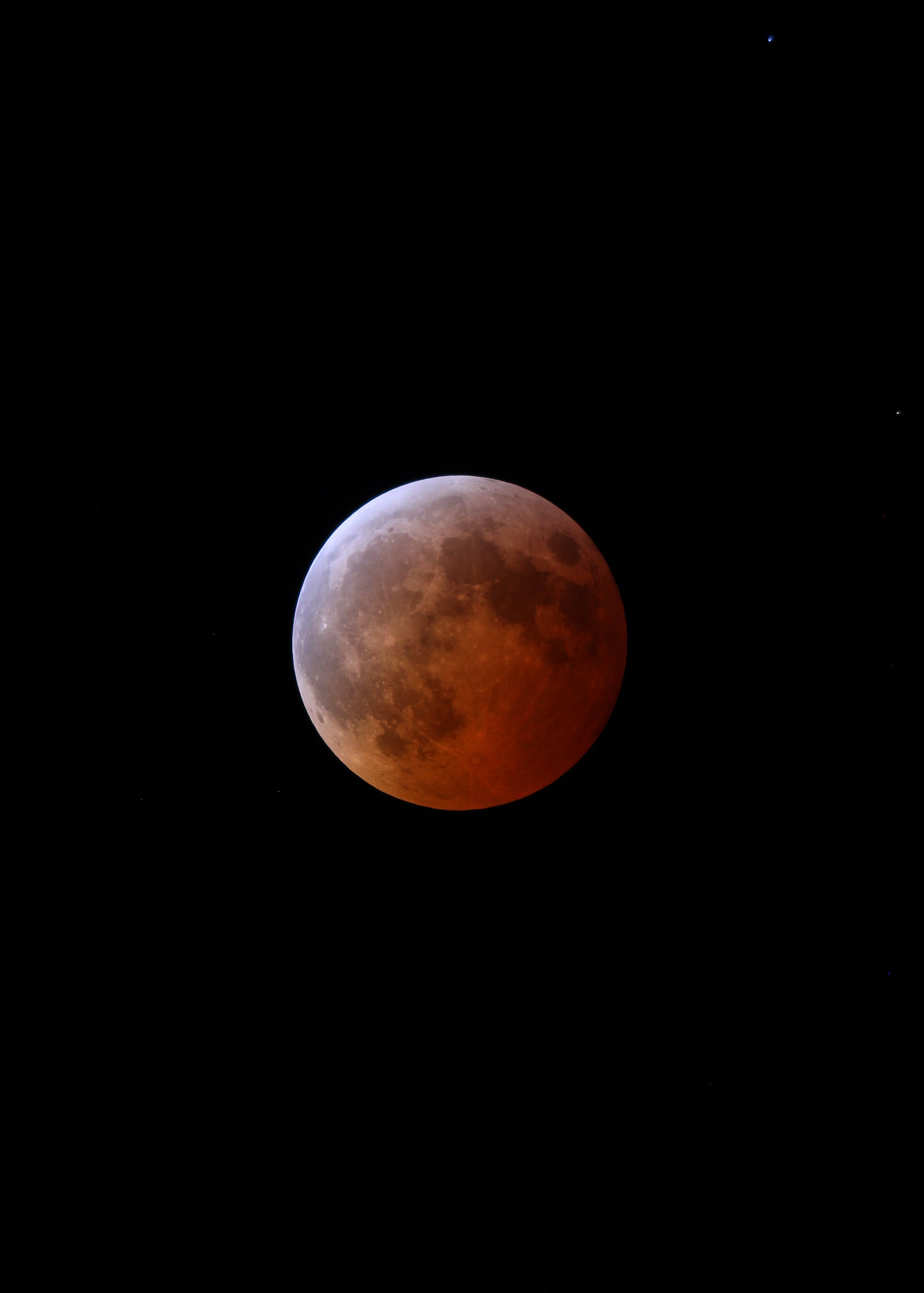PLEASE SCROLL DOWN FOR PHOTOS. The Total Lunar Eclipse of March 14th, 2025. This eclipse occurred on the evening of Thursday March 13th into the morning of Friday March 14th, 2025. It was visible from the entire western hemisphere of earth. This type of lunar eclipse commonly produces a “Blood Moon”, and the photos I took here tell why!
It was a perfect night to photograph a lunar eclipse. No very cold temperatures- it was just below freezing. No snowpack, no wind, and WOW not clouds! I set up my William Optics Zenithstar Z73 apo refractor (pictured on this homepage) with my Canon T7 camera and got ready to capture some great shots. Once the focus was tweaked and set, it was just a matter of adjusting my ISO setting, and shooting exposures stopped up and down to capture the light just right. Most of these shots are at ISO 100 with some totality shots at ISO 200.
The very first photo here (left or top) is edited to show approximately what the Blood Moon looks like to the naked eye from the ground. Place your phone about 10 feet away and view this picture in a dark room to get a sense of IRL view! In some of the shots you can see two stars to the right of the moon. These would be the “Gemini twins”, Castor and Pollux, seen as two stars, one whitish-yellow and the other blue. I was delighted beyond belief when I upload my shots to the computer and noticed these stars! It was a bonus for me since I’m a Gemini!
Below you’ll see partial eclipse shots as the earth’s shadow moves across the surface of the moon, towards “totality”, and then away afterwards. These partial shots were taken with very short exposures to show the moon in a “partial” phase, covered by the shadow of the earth. Notice that at the terminator (where the shadow’s edge is) there are no shadows of craters or surface features visible. It’s just a “fuzzy” edge. This is because the earth’s shadow is causing a “partial moon phase” effect and covering the moon’s surface directly head on. During a REAL partial moon phase it is the Sun’s light shining on the moon’s surface at an angle thus creating shadows from lunar surface features and making craters visible.
I woke at 130AM to start photographing this fabulous event. As the night wore on, I was in and out of the house, to warm up, and to keep myself busy in between photo shots. What was stunning is how at the beginning of the eclipse a full moon illuminates the ground quite noticeably but as the eclipse nears totality the ground darkens. At max eclipse the night appears as during a new moon. It’s very dark. Only a few hours later to brighten up as the full moon is revealed again as the earth’s shadow moves off the lunar surface and back out into space.
The next total lunar eclipse will occur September 7th 2025, visible from the eastern hemisphere of earth. After that, on March 3rd 2026 a total lunar eclipse will be difficult to view, if at all, from the western hemisphere as the moon will be setting during totality. On December 31st 2028 a total lunar eclipse will not be visible from the western hemisphere. If you can wait until June 26th 2029, you’ll be treated to a summer total lunar eclipse in that starts around 10pm and happens to be “central”. Meaning the very center of earths shadow will pass through the the centerline of the moon, thus producing a deep Blood Moon!










